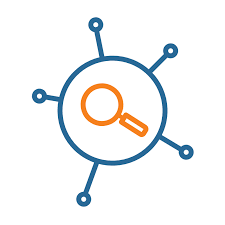

Reduce development and operating costs, power consumption, and associated carbon emissions. 90% of data processed at the edge using smart-devices, tablets, laptops, and desktops.
Mix and match 16 topologies including Centralized, Decentralized, Distributed, and Offline across public and private cloud deployments simultaneously.
Multi-tenant data processing outside the cloud across Windows, macOS, Android, iOS, Linux, Docker, and WASM platforms simultaneously. Leverage spare processing capacity in lieu of paid-for.
Move data processing from the database to the device to design-in data devolution, data privacy, and low-code data democracy.
Adds distributed transactional and relational data processing Client functionality and Server capability to the .NET programming language.
Regulatory compliance and net-zero offer a tangible competitive advantage with a positive effect on the bottom line.

Developers, analysts, and collaborators interact with virtual data micro-services. Data models appear inline as part of the language eliminating object-relational mapping (ORM) integration tools

Binary data streamed in the producers’ and consumers’ language and shape of choice via two simple intrinsic methods, Read(criteria) and Write(updates)

An intermediate data language acts as an interpreter enabling all data regardless of vendor, shape, location, or format to appear in the format the consumer requires

A technological leap in indexless data access. Encompassing dynamic and discoverable just-in-time schema, optimized for operational and analytical data solutions

As simple as configuring one or more micro-server endpoints to combine disparate data programs and sources into modular cross-domain multi-provider linear-scale data assets

With a standardized data format, features are no longer vendor or data format specific; RDBMS vs Document and SQL vs NoSQL vs NewSQL becomes irrelevant, it's Data-as-a-Service

The concept of a separate back-end is outdated, LinearBase is a single integrated platform. Designers model data programs. Developers implement logic. Data producers provide content. Analysts draw insight.

The read-optimized storage mechanism supports schema and content discovery, i.e. find which data models contain field X or where Y content occurs. Traverse results to gauge context and gain insights

There are no layers of code to modify. A structural change is as simple as creating and saving a schema-change instruction. The read-optimized listeners and code generators reflect temporal changes immediately